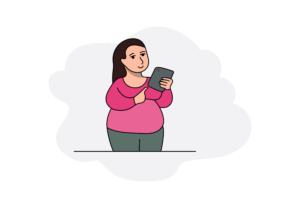Good Practice: Access Arrangements in Examinations, for Learners Who Use EAL
Our latest article unpacks the new regulations on access arrangements in exams, provides practical guidance for schools, and shares strategies to help EAL learners gain the confidence and skills they need to succeed.
This article was originally published with SecEd in 2024 and has been updated to reflect latest changes in access arrangements.
Introduction
Schools have seen an increase in the number of multilingual learners who use English as an Additional Language (EAL). Many of these learners are new arrivals who are new to English, and new to the English education and exam systems. If they have been enrolled for GCSEs, they are likely to achieve better with special arrangements in place. But for many schools, providing these access arrangements for learners using EAL is a new challenge. In this article, we set out the Joint Council for Qualifications’ latest regulations for access arrangements and outline best practice that enables learners using EAL to gain maximum benefit from those arrangements.

Multilingual learners are a very diverse group, with a wide range of proficiency in English. In addition to language challenges they may face, being a new arrival in England with no knowledge or experience of the English schooling and exam systems, puts them at a disadvantage in assessment that is designed for their English monolingual peers.
As Year 11s approach exams, schools may be seeking clarity about the arrangements available to them or are planning for next year’s cohort. Schools will want to make sure that learners who have been enrolled to sit the exams are given the best possible chance of achieving.
Good communication and cooperation between teachers, the EAL Co-ordinator and Special Educational Needs Co-ordinator (SENDCo) will allow schools to make use of all the opportunities available to learners using EAL, thereby reducing the pressure of high-stakes exams and helping to lessen the cognitive load. Where schools don’t have an EAL Co-ordinator and this is up to the SENDCo or the Inclusion lead, for example, they will need to engage with the updated arrangements, to provide EAL learners with the latest available support in exams.
Robust admission systems for new arrivals will help schools to make informed decisions about what exams to enter them for and how best to prepare them for those exams. Information about a learner’s previous education, proficiency in their preferred language, and in English, and curriculum knowledge, will help teachers to establish access arrangements in exams as a learner’s normal way of working, introduce access arrangements in class assessments, and provide the EAL Co-ordinator and SENDCo with information so that they can apply for appropriate external access arrangements in time.
1. What are the most up-to-date access arrangements, for learners using EAL?
The Joint Council for Qualifications (JCQ) (2024) has released updated access regulations, which cover the period between 1 September 2024 and 31 August 2025, available here: JCQ - Access Arrangements and Reasonable Adjustments. See chapter 5, where the latest changes are highlighted.
The related documents contain the requirements for SENDCos and EAL coordinators, the full range of arrangements available, deadlines for applications, and whether and how applications need to be made. See here: Regulations and Guidance - JCQ Joint Council for Qualifications
The new arrangements available to learners using EAL, in 2025 are:
The other main arrangements that apply directly to EAL learners are:
2. What about learners using EAL who also have SEND?
Multilingual learners using EAL may be refugees or children seeking asylum and may have mental health needs. If a learner has an Education, Health and Care Plan (EHCP) in place, they qualify for arrangements such as supervised rest breaks, or alternative rooming arrangements, such as a smaller room. EAL Coordinators and SENDCos should communicate regularly and consider how rest breaks, and extra time, for example, could help EAL learners suffering from trauma. For extra time, the SENDCo needs to supply a formal diagnosis of social, emotional, and mental health needs (SEMH). Possible access arrangements for learners with social, emotional and mental health needs are listed on page 34 of the guidance.

Applications for access arrangements for late arrivals can be submitted as late as Year 11. This underlines the need for schools to be doing thorough, ongoing assessment of language proficiency in the learner’s preferred language and English, and in communicating regularly with families about their child’s needs and about decisions around access arrangements. JCQ’s editable information sheet, available here: Regulations and Guidance - JCQ Joint Council for Qualifications, is a useful starting point but is likely to need careful translation and/or discussion with families.
Where a multilingual learner using EAL is on the special educational need or disability (SEND) register, and qualifies for additional access arrangements, this should be managed by the SENDCo and coordinated with subject teachers who are embedding additional ways of working with a bilingual dictionary and/or extra time, in their subject.
3. How can teachers prepare learners using EAL to get the most out of access arrangements?

Teachers can train learners to make strategic use of a dictionary, by:
- Identifying key words in an exam question and using the dictionary to confirm the meaning where they need to.
- Scanning a text and identifying key words to look up.
- Using knowledge of etymology, including word roots, prefixes and suffixes, to access meaning, for example of a word like decompression, where only compress appears in the dictionary.
- Using the dictionary strategically as they construct their answers.
These strategies will help learners get the most out of a dictionary, without wasting precious time looking up each new word they encounter in a text or question. Teachers can access this resource Bilingual Dictionaries - The Bell Foundation (bell-foundation.org.uk)for additional guidance.
Teachers should make sure that learners use the same approved dictionary throughout, so that they are familiar with it and don’t waste time in the exam making sense of an unfamiliar layout.
Learners who qualify for 25% extra time should regularly be given that time in class tests and mock exams, so that they learn to pace themselves accordingly.
4. What language strategies can teachers share to support EAL learners?
Secondary schools are adept at teaching academic literacy and are likely to be able to draw on good practice already in the school for modelling how to weave proficiency in English into planning and teaching. These familiar strategies are particularly helpful:
- Skim read the text and predict what it is about. Skimming the text title, any sub-headings, looking at images, such as diagrams and photographs, and reading captions helps readers to gain a global sense of the text. Readers can then predict what the text is about and read with greater understanding.
- Read the text more than once, using the translation dictionary to find the meaning of key words, and to deepen an understanding of what it is about.
- Scan the text for key words, to find information for answers.
- Use context to work out the meaning of new words. Reread the sentence the word is in, then the paragraph, and use visual clues, such as illustrations, to work out the meaning of a new word.
- Recognise subject-specific language. Subject teachers can alert their students to the ways writers use language in their subject and provide lots of practice reading examples of texts like reports and accounts. Science teachers can focus on the use of the passive voice in reports for example. English teachers can focus on metaphorical language and the need for readers to read between the lines for meaning.
Teachers need to make sure that learners are familiar with the range of question types they are likely to encounter in the exam, including multiple choice questions, drawing on sources to construct an answer, reading a diagram or graph, and including working in questions.
Conclusion
“My big dream is to do my GCSEs and go to college, which is what I want to do, and get high grades and go to uni…” (young female refugee, new to the UK, quoted in Office for National Statistics, 2024).
Access arrangements can help to level the playing field for learners new to English, creating opportunities for them to produce their best work. Schools should be up to date with the latest permitted arrangements, identify learners who need them, share information among all staff, and embed and rehearse exam access practices beforehand, so that they become part of the learner’s normal way of working. That way, learners using EAL have increased chances of achieving well and reaching their dreams, alongside their English-speaking peers.
References
- Joint Council for Qualifications (2024) Access Arrangements, Reasonable Adjustments and Special Consideration JCQ - Access Arrangements and Reasonable Adjustments
- Joint Council for Qualifications (2024a ) JCQ-Instructions-for-conducting-examinations_2024_Print-1.pdf
- Office for National Statistics (ONS), released 23 January 2024, ONS website, article, Experiences of displaced young people living in England: January to March 2023
